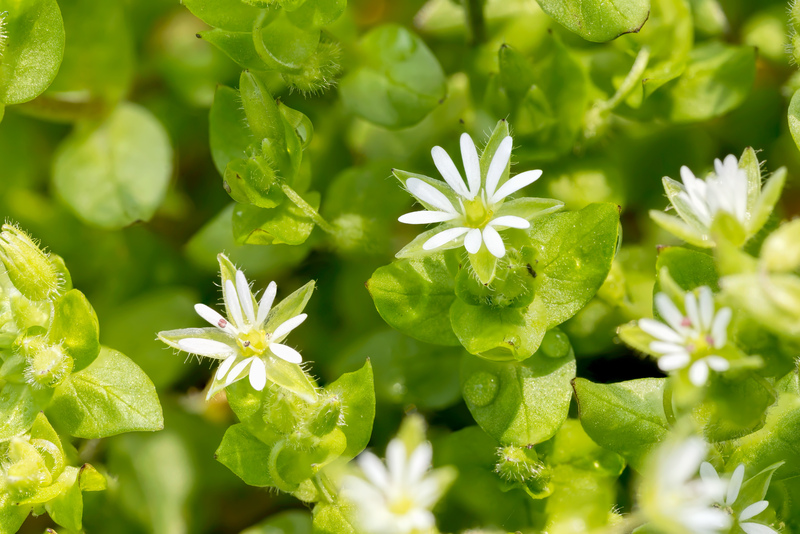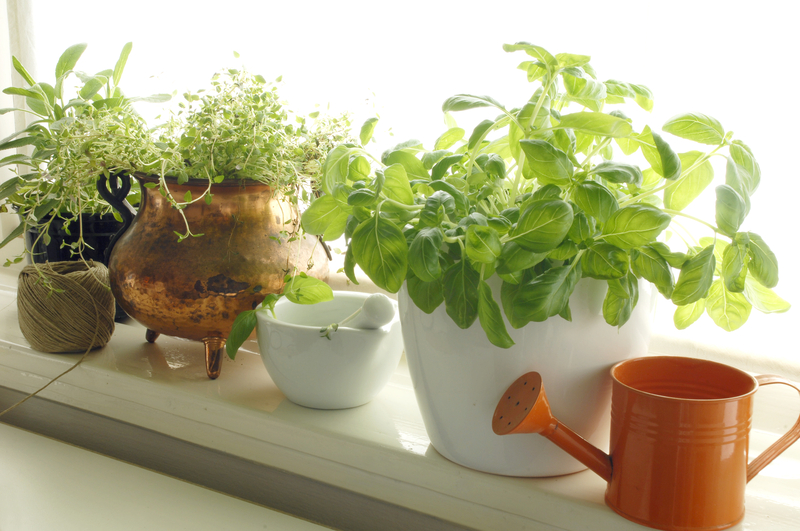How to Build a Sustainable and Organic Herb Garden
Posted on 29/05/2025
How to Build a Sustainable and Organic Herb Garden
Herb gardening has never been more popular, and for good reason! Growing your own herbs is cost-effective, eco-friendly, and deeply rewarding. Not only does it provide you with fresh, flavorful additions to your meals, but it also helps to reduce your carbon footprint and reliance on mass-produced products. If you're interested in learning how to build a sustainable and organic herb garden, you're in the right place. This comprehensive guide will walk you through every aspect, from planning your space to ongoing maintenance, with a special focus on methods that are both gentle on the planet and incredibly productive.
Why Choose Organic and Sustainable Gardening?
Choosing to cultivate an organic herb garden means avoiding synthetic fertilizers and pesticides, which can harm local wildlife, pollute waterways, and reduce soil fertility over time. Sustainability, meanwhile, emphasizes practices that preserve resources for future generations. When paired together, organic and sustainable cultivation ensure that your herb harvest is healthier for both you and the environment. Let's explore the steps involved in creating a thriving, eco-conscious herb oasis.

Step 1: Planning Your Herb Garden for Sustainability
Site Selection
- Sunlight: Most culinary herbs thrive in full sun (at least 6 hours a day). Choose a location that receives ample sunlight.
- Soil Drainage: Good drainage is crucial. Avoid areas where water pools after rain.
- Accessibility: Choose a site near your kitchen for convenience, reducing the temptation to neglect your garden.
- Protection: Consider windbreaks or partial shading for tender herbs or in extremely hot climates.
Choosing the Right Herbs
When planning your sustainable organic herb garden, factor in your local climate and culinary preferences. Select herbs that grow well in your region with minimal intervention. Some top choices include:
- Basil
- Thyme
- Rosemary
- Parsley
- Sage
- Oregano
- Mint (best grown in containers to prevent spreading)
- Cilantro
- Dill
Heritage and Heirloom Varieties
Support biodiversity by including heirloom and heritage herbs. These varieties often have improved flavors and are better adapted to local conditions. Plus, you help preserve plant genetics for the future.
Step 2: Creating Healthy, Organic Soil
Why Soil Health Matters
The foundation of a sustainable herb garden is living, nutrient-rich soil. Healthy soil supports vigorous plants that naturally resist pests and diseases.
Building Sustainable Soil
- Compost: Regularly incorporate homemade or locally-sourced compost to enrich soil and encourage beneficial microbes.
- Crop Rotation: Change where you grow each type of herb year to year to prevent soil-borne diseases and nutrient depletion.
- Mulching: Apply a thick layer of organic mulch (like straw, wood chips, or shredded leaves) to retain moisture, suppress weeds, and return nutrients as it decomposes.
- No-Till Gardening: Minimize digging to preserve soil structure and beneficial organisms like earthworms and mycorrhizal fungi.
- Green Manures/Cover Crops: Plant cover crops, such as clover, during the off-season to fix nitrogen and boost soil fertility.
Step 3: Planting Your Organic Herb Garden
Seeds or Seedlings?
When aiming for sustainability, opt for organic, non-GMO seeds or purchase certified organic seedlings. Starting from seed offers greater variety and reduces plastic waste, while seedlings provide a jump-start for impatient gardeners.
Planting Guidance
- Spacing: Research each herb's spacing needs. Good airflow reduces fungal disease and competition for resources.
- Depth: Sow seeds at the correct depth noted on the packet. Herbs like basil need warmth and should be started after the last frost.
- Water: Initially, keep the soil moist but not soggy until seeds sprout. Established herbs prefer drying out between waterings.
Step 4: Sustainable Watering Practices
Water conservation is at the heart of sustainable gardening. Overwatering wastes resources and can lead to root diseases, so learning smart irrigation techniques is essential.
- Mulch: Retains moisture and prevents evaporation.
- Drip Irrigation: Use a drip system or soaker hoses to deliver water at the root zone directly, minimizing waste.
- Rain Barrels: Collect rainwater from gutters for use in your garden, reducing reliance on municipal supplies.
- Watering Schedule: Water early in the morning or late in the evening to cut losses from evaporation.
- Drought-Tolerant Herbs: Grow Mediterranean herbs like rosemary and thyme, which naturally require less water.
Step 5: Organic Pest and Disease Management
Encouraging Biodiversity and Natural Pest Control
The most resilient organic herb gardens host a variety of organisms, creating a balanced ecosystem. Attract beneficial insects like ladybugs, lacewings, and hoverflies by planting pollinator-friendly flowers (e.g., calendula, nasturtium) among your herbs.
- Companion Planting: Plant basil near tomatoes, dill with cabbage, or chives with carrots to repel pests naturally.
- Physical Barriers: Use row covers or netting to protect against insect infestations.
- Hand-Picking: Remove caterpillars, beetles, and other pests by hand in smaller gardens.
- Organic Solutions: As a last resort, use treatments like neem oil, castile soap spray, or diatomaceous earth - and always follow label instructions.
Preventing and Managing Disease
- Healthy Soil: Fortified soil discourages many diseases.
- Hygiene: Remove diseased plant material to prevent the spread of pathogens. Sterilize tools between uses.
- Airflow: Maintain proper plant spacing for good airflow, preventing mildew and rot.
Step 6: Composting and Waste Reduction
Homemade Compost
Building a simple backyard compost pile or bin recycles herb clippings, vegetable scraps, coffee grounds, and yard waste into "black gold" for your garden. This closed-loop system is the epitome of sustainability.
- Balance "Greens" and "Browns": Mix nitrogen-rich "greens" (kitchen scraps, fresh plant material) with carbon-heavy "browns" (dried leaves, twigs, shredded cardboard).
- Turn the Pile: Aerate your pile regularly for faster decomposition.
- No Meat or Dairy: Exclude animal products to avoid pests and odor.
Reusing and Upcycling
- DIY Plant Markers: Repurpose old spoons, stones, or popsicle sticks to label herbs.
- Repurposed Containers: Upcycle wine crates, old watering cans, or other found materials for charming, eco-friendly herb planters.
Step 7: Sustainable Harvesting and Pruning Techniques
Sustainable harvesting encourages ongoing growth without stressing your plants. Here's how to harvest without harm:
- Snip Smart: Use clean, sharp scissors to prevent disease transfer.
- Harvest Regularly: Regular trimming, especially for leafy herbs like basil and mint, encourages bushier, more productive growth.
- Leave Enough: Never remove more than one-third of a plant at a time, allowing it to recover and continue thriving.
Step 8: Seasonal Care and Long-Term Sustainability
Winter Protection
- Mulch Heavy: Apply a thicker mulch over roots of perennial herbs to insulate them from freezes.
- Indoor Start: Pots or cuttings can be brought indoors for winter use, extending the growing season.
Saving Seeds for Next Season
- Allow Herbs to Flower: Let some herbs go to seed. Collect fully dried seeds for sowing next year or sharing with friends.
- Label Carefully: Keep seeds dry and labeled by specie and date for future planting.
Benefits of a Sustainable and Organic Herb Garden
Why invest this effort? Let's recap the many rewards of a sustainable organic herb garden:
- Reduced Food Miles: Harvesting from your own garden means fewer resources spent on transportation and packaging.
- Healthier Produce: Organically grown herbs offer more intense flavors, fragrance, and nutrients--without chemical residues.
- Wildlife Habitat: Sustainable gardens support pollinators, birds, and helpful insects.
- Stress Relief: Gardening is proven to reduce anxiety and boost overall well-being.
- Educational: Involve family members and children to teach them valuable lessons about nature and responsibility.

Going Further: Expanding Your Herb Garden Sustainably
Once your initial plot is thriving, consider expanding your herb garden in these eco-friendly ways:
- Vertical Gardens: Grow herbs up walls or trellises to use less space and resources.
- Living Mulch: Plant low-growing herbs as groundcover to crowd out weeds and protect soil.
- Interplanting: Mix herbs with vegetables and flowers to cultivate true biodiversity and minimize pest outbreaks.
- Community Sharing: Trade seeds, cuttings, or fresh harvests with neighbors, enhancing local resilience and reducing waste.
Conclusion: Embrace the Organic Herb Garden Lifestyle
Knowing how to build a sustainable and organic herb garden empowers you to grow healthier food, support local ecosystems, and cultivate a greater appreciation for the cycles of nature. Whether you're working with window boxes, raised beds, or a spacious backyard, embracing ecological gardening techniques makes your herb patch an asset for you--and the planet.
Start small, use what you have, and remember: every homegrown, pesticide-free sprig of basil or parsley is a step toward a more sustainable future.

